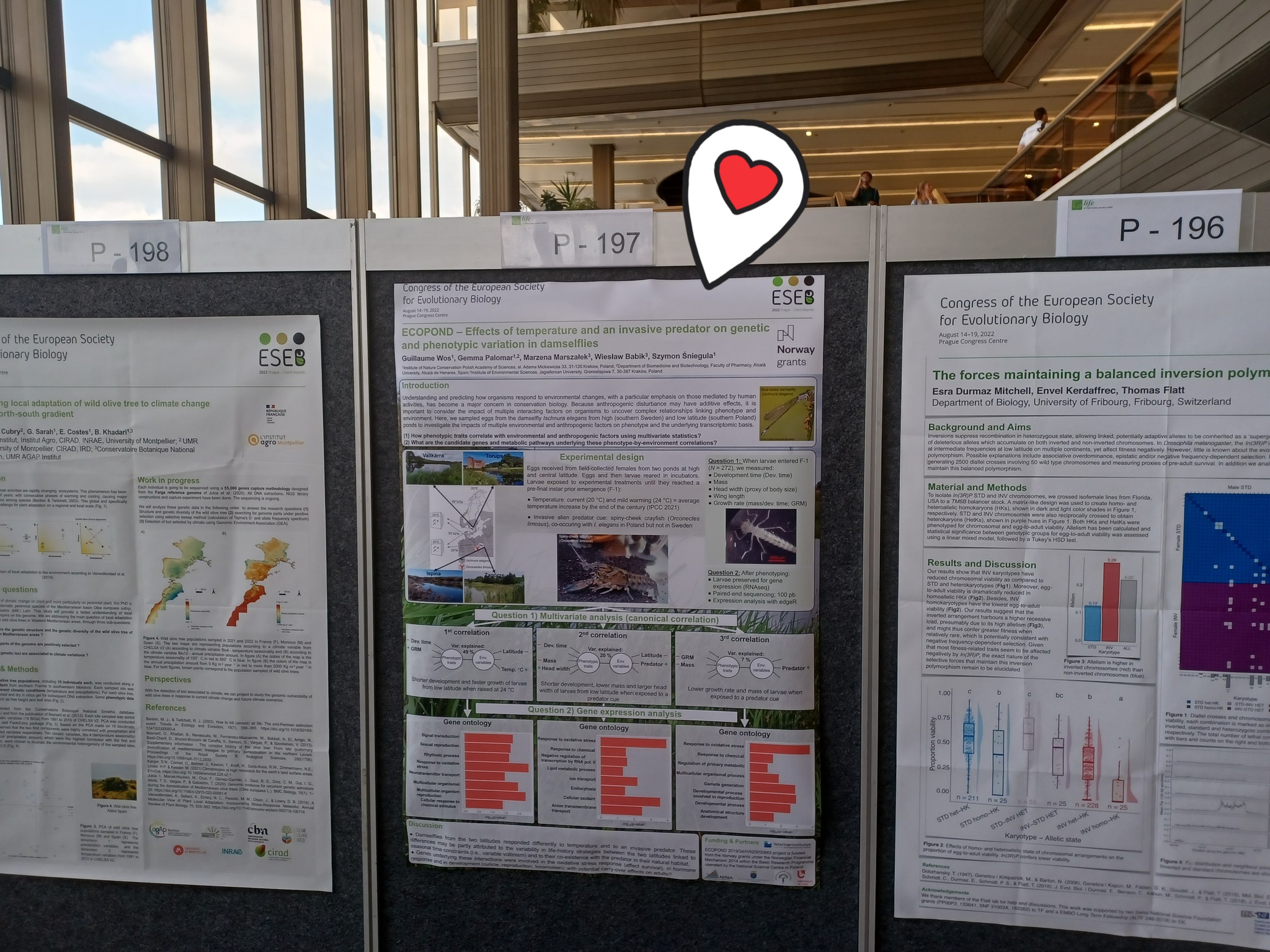

Understanding and predicting how organisms respond to environmental changes, with a particular emphasis on those mediated by human activities, has become a major concern in conservation biology. Here, we studied the effect of two environmental factors related to human disturbance in multiple life-history traits of a freshwater insect, the damselfly Ischnura elegans, further exploring the transcriptomic basis of their response. For this, we used damselfly individuals of different origins, low-latitude (southern Poland) and high-latitude (southern Sweden) populations, to consider the existing variability in life-history strategies. Damselfly larvae were exposed to two experimental treatments in a crossed design, to mild warming temperature, fitting climate change trend according to IPCC RCP8.5 scenario, and to an invasive alien predator cue, the spiny-cheek crayfish. During the experiment, we measured several phenotypic traits (growth rate, development time, body size and weight) and preserved samples for a gene expression analysis. Using multivariate statistics, we demonstrated that especially growth rate and weight of individuals from different latitudes were affected in a different way by mild warming temperature and by the invasive predator cue, revealing complex relationships linking phenotype and environment. The gene expression analysis provided insights into the gene regulatory network and metabolic pathways underlying these phenotype-by-environment interactions.




